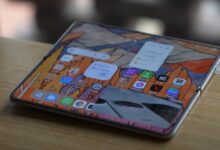Charging your mobile device on a computer could put your data at risk

In any working environment there is always this one colleague who keeps borrowing your USB cable to charge his or her Smartphone. Maybe you always do it too. Well, I do it most of time, charge my Smartphone using a standard USB connection connected to my computer. What I don’t know, or even most people don’t is that this this could really comprise our smartphone.
According to a new discovery by experts from Kaspersky Lab, in a proof -of concept experiment, Smartphones can be compromised when charged using a standard USB connection connected to a computer.
What most of us don’t know when we decide to connect our smartphones to freely available charging points at airports, cafes or even parks, the amount of data being exchanged between these points is quite massive.
As part of the of the research, Kaspersky Lab expert tested a number of smartphones running on various versions of Android and Ios operating system to understand what data the device transfers externally while connected to a PC or Mac for charging. The test results indicate that the mobiles reveal a whole litany of data to the computer during the ‘handshake’ (a process of introduction between the device and the PC/Mac it is connected to). The data includes: the device name, device manufacturer, device type, serial number, firmware information, operating system information, file system/file list, electronic chip ID.
They also found out that the amount of data sent during the handshake varies depending on the device and the host, but each smartphone transfers the same basic set of information, like device name, manufacturer, serial number etc. This should leave most smartphone users really worried considering that all smartphones always accompany the owner; your device serves as a unique identifier for any third party who might be interested in collecting such data for some subsequent use.
Back in 2014, a concept was presented at Black Hat that a mobile phone could be infected with malware simply by plugging it into a fake charging station. Now, two years after the original announcement, Kaspersky Lab experts have been able to successfully reproduce the result. Using just a regular PC and a standard micro USB cable, armed with a set of special commands (so-called AT-commands), the experts were able to re-flash a smartphone and silently install a root application on it. This amounts to a total compromise of the smartphone, even though no malware was used.
Although information about actual incidents involving fake charging stations has not been published, the theft of data from mobiles connected to a computer has been observed in the past. For example, this technique was used in 2013 as part of the cyber espionage campaign Red October. And the Hacking Team group also made use of a computer connection to load a mobile device with malware. Both of these threat actors found a way to exploit the supposedly safe initial data exchange between the smartphone and the PC it was connected to. By checking the identification data received from the connected device, the hackers were able to discover what device model the victim was using and to progress their attack with a specifically-chosen exploit. That would not have been as easy to achieve if smartphones did not automatically exchange data with a PC automatically upon connecting to the USB port.
“It is strange to see that nearly two years after the publication of a proof-of-concept demonstrating how a smartphone can be infected though the USB, the concept still works. The security risks here are obvious: if you’re a regular user you can be tracked through your device IDs; your phone could be silently packed with anything from adware to ransomware; and, if you’re a decision-maker in a big company, you could easily become the target of professional hackers,” Alexey Komarov, researcher at Kaspersky Lab warned. “And you don’t even have to be highly-skilled in order to perform such attacks, all the information you need can easily be found on the Internet,” he concludes.
Consumers should therefore protect themselves from possible attack through unknown charging points and untrusted computers. They can do this by using only trusted USB charging points and computers to charge their device. They can also protect their mobile phone with a password, or with another method such as fingerprint recognition, they should also not try to unlock it while charging. Another way could be by using encryption technologies and secure containers (protected areas on mobile devices used to isolate sensitive information) to protect the data.
Kasperky Lab experts are also advising you to protect both your mobile device and your PC/Mac from malware with the help of a proven security solution. This will help to detect malware even if a “charging” vulnerability is used.



